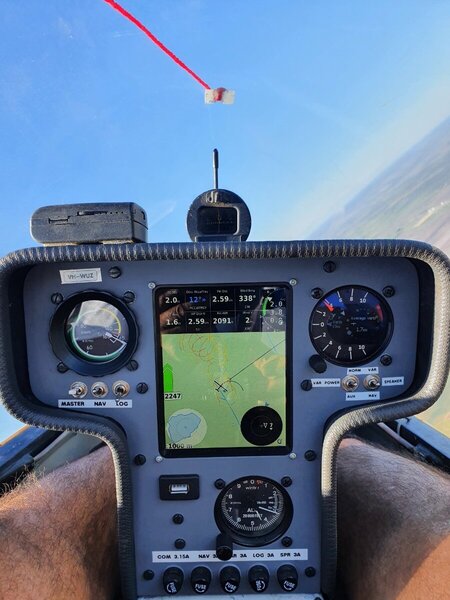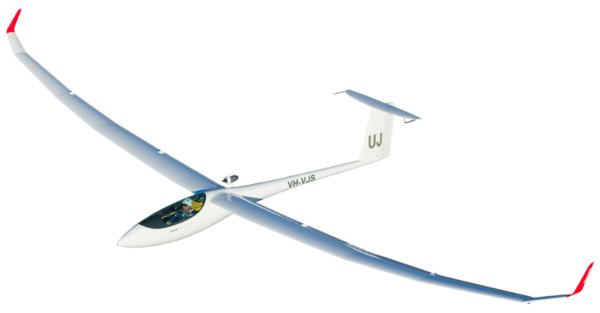
Rastus
-
Posts
86 -
Joined
-
Last visited
Content Type
Profiles
Forums
Gallery
Downloads
Blogs
Events
Store
Aircraft
Resources
Tutorials
Articles
Classifieds
Movies
Books
Community Map
Quizzes
Posts posted by Rastus
-
-
Looks like a Piper Tri-Pacer
-
 3
3
-
-
It is called a dipole antenna. They are used in places where there is no electrical groundplane. Picture a metal Tecnam with an antenna on top. The aeroplane becomes the groundplane for the antenna. A dipole is generally more efficient than a simple antenna. I would leave it alone. Over to you RFguy 😋
Robert
See RFguy has just beat me. 🤪
-
 1
1
-
 1
1
-
-
114 is a lovely aeroplane. Many happy hours in VH-UGM years ago.
-
-
-
5 minutes ago, F10 said:
This is a very tragic crash. I was wondering why the gear was down, it should have been left up till landing was assured. The 114 is a nice machine, but I think it only has one door? Tragic if fuselage distortion prevented the door opening, if people were in a condition to get out. Always unlatch doors for ditching. Tragic, tragic for those poor kids. A terrible event.
Two doors. Really nice aeroplane. Not a quick as a Bonza, but very comfortable an roomy.
-
3 minutes ago, nomadpete said:
4000' and going up
Yep. My first flight on type. Noice.
-
 1
1
-
-
-
Thread drift much?
-
 1
1
-
 1
1
-
-
-
3 hours ago, Bruce Tuncks said:
Yep, I don't know the details of just what was different about the Bohli. But if you google up Bohli compasses and cloud flying and gliding competitions then you will get the story. I'm sure that they were not ideal, but keen and gung-ho glider pilots found them to be a loophole in the rules which they were happy to exploit. They would have been less use in Australia anyway, with our higher cloudbases. And you would need a southern hemisphere version to get things right. I have no idea if they even made a southern hemisphere version.
They did. I have flown a Ventus with one fitted. Never tried IMC, but it looked as though it would have worked OK. Actually, I think a Bohli would not need a North/South version because of the way it works. Google it and you will see what I mean. Robert
-
7 hours ago, Roscoe said:
I use my Dynon D2 pocket panel efis to give me gps ground speed, altitude, track, and slip/skid info.
Dynon also say that the instrument is not certified for IFR ops.
Like others have said, I cannot understand why the Glider in the Video did not have any attitude indicator at all.
Is this normal for Gliding Ops?
Gliders are not permitted to operate in IMC in Australia, not sure about NZ. Usually there is limited space in the panel for extra instruments anyway. Also, limited electrical power available due to having no in-flight charging system. Gliders generally run 1 or 2 small ( 7Ah or so ) batteries. Gliders don’t normally fly in poor weather and a prudent pilot won’t get in a situation like we see in the video. Robert. Glider pilot since 1972, GA since 1984.
-
 1
1
-
-
1 hour ago, Old Koreelah said:
Good point, KR. Perhaps some form of G-meter should be mandatory, especially on aircraft for hire. I suspect that quite a few hard landings and other incidents are not reported; some may cause enough damage to increase risk for subsequent users.
A G meter is mandatory for gliders in Australia registered in the Aerobatic category.
-
 2
2
-
-
2 hours ago, M61A1 said:
R22s also have a well designed fan forced air cooling system and is unlikely to experience high power followed by shock cooling as they are generally at a high power setting the whole time the machine is airborne, very much unlike the average Lyc powered glider tug that gets many high power then back to zero cycles in a day then self destructs in less than a thousand hours.
Both Lycosaurus powered Pawnees at my club make TBO with not too many issues. Both have CHT monitors and one has cowl flaps. Haven't had a cracked pot since the CHT gauges went in. Tugmaster keeps an eye on cycle times to weed out cowboys.
-
 1
1
-
-
[
I knew him quite well. They took his height record from him, sadly but correctly in my view, because cloud flying is illegal. Bert initially claimed he had climbed up the outside but privately told differently.
Bert nearly held a world record out and return ( Bond Springs to Three Ways ) but got caught out by darkness on the return.
I agree he was a great guy and I have several more stories about him. He was a larger than life character for sure.
What are you guys on about? Your posts seem to imply that you believe Bert Persson has passed on. I can assure you that, as of last evening ( 21/07/2020), Bert is very much alive and kicking.
In fact, he has recently been very involved in re-furbishing Caboolture GC's Pawnee and in the last 12 months has rebuilt a damaged Blanik to flying condition'
Please tell me I am wrong about the tone of this thread.
Robert
-
Hoover near the end

-
 1
1
-
 1
1
-
-
Tow gliders with a Pawnee 235
-
Pilots daughter informs me that pilot is definitely OK.
-
 3
3
-
-
Separate accidents, Pawnee cropduster pilot Ok I believe!
Pilots daughter informs me pilot definitely OK.
AC is a Pawnee Brave
-
 3
3
-
 3
3
-
-
Bruce it surprise me too; I believe during WWII only the Russians used Diesel engines in their tanks.
British Matilda IV tank was powered by twin Leyland 6cyl diesel engines. 95 hp each
Robert
-
 1
1
-
-
Taildragger configuration doesn't work well on a Savannah or 701. Have to move the main gear forward, and with the tailwheel at the back, the angle of attack that can be pulled on takeoff and landing is less than at present and performance is less good..... With the present gear can rotate more and when landing can hold the nose wheel way off the ground, so that it's landing very much like the best taildragger anyhow.
The cabin structure isn't built to take the load of mains at a point forward of the present strong point, and there's also the question of whether the tail cone could handle the loads of a tailwheel, especially on rough ground.
Bad idea all round, better as it is.....
And yet: https://www.icpaviazione.it/?page_id=1710&lang=en
Seems the factory doesn't have an issue with a tailwheel.
Robert
-
 1
1
-
-
I'm staggered no-one has thought of this before.

Kookaburra two seat glider
https://images.app.goo.gl/XmHa1xwuaha3Za579
-
 1
1
-
 1
1
-
-
I owned a 1967 Cherokee 180 for about 10 years in the 90’s and have operated a 1977 Archer II for about the last 10 years. Neither aeroplane gave me an ounce of trouble in all that time. I also flew a Commander 114 for about 5 years before the Archer.
The 180 was based in the bush on my farm strip and the Commander and Archer are based on the coast.
Plenty of older aeroplanes will give good service if they have been looked after. None of the three were ever used for training and all had/have around 4000 Hrs TTIS.
Look for a good airframe first and look at the engine second. You can always replace or overhaul an engine but, if the airframe is a dog, it will eat up money at a huge rate and never be any good.
The right aeroplane may be able to run on Mogas with an STC. My Gliding club has run two Pawnee 235’s on Premium 98 for more than 10 years (thousands of hours) with a significant saving in costs. My Cherokee 180 did over 300 hours on mogas. She ran cooler, smoother, and didn’t even look like fouling a spark plug. Something she did a lot of when running on avgas.
I wouldn’t go for an Arrow or similar, maintenance costs rise to ridiculous levels when you add retractable undercarriage and constant speed props to the equation. The Archer costs less than half to maintain than the Commander 114 that she replaced doing about the same number of hours each year.
I think it is worth owning your own aeroplane if you are going to be doing a fair bit of flying. If you don’t do at least 70 odd hours or more a year, it will probably be cheaper to rent.
Piper or Cessna?
You say potayto, I say patarto! You can sit under the wing of a 172 in the shade. You can see out of a Cherokee when you are turning. A little of column A, a little of column B.
Robert
-
 3
3
-
 1
1
-
 1
1
-
 1
1
-
-
A couple of very useful document are available as a free download from the FAA website.
AC43 is the generic title. Specifically: AC43. 13-1B & AC43. 13-2B
They describe acceptable practices for various maintenance and repair tasks.
I have used them for more than 30 years as a reference document when training others in the care and feeding of gliders.
Robert
-
 1
1
-
 1
1
-



Cessna 421 ditching Barwon Banks off Mooloolaba 10/11/2023
in Aircraft Incidents and Accidents
Posted
Actually was a Cessna this time! But not a Challenger or Learjet.
FlightRadar24 shows a C421 VH-VPY that tracked east for a while then turning around and gently drifting down to sea level.
Well done to the crew for successfully ditching the aeroplane.
Robert